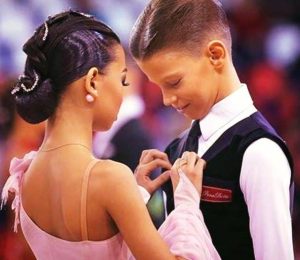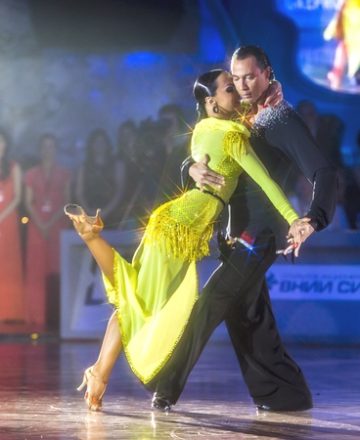The Junior Division of DanceSport is a competitive division of Ballroom Dancing. Junior category competing in "International Style Latin", "Standard" and 10 Dance. Junior I: Reach 12th or 13th birthday in the calendar year, Junior II: Reach 14th or 15th birthday in the calendar year.
The Professional Division of DanceSport is a competitive division of Ballroom Dancing. A Professional is a member of a profession or is any person who earns their living from a specified professional activity. The term also describes the standards of education and training that prepare members of the profession with the particular knowledge and skills necessary to perform their specific role within that profession.
During the difficult times of the Coronavirus worldwide epidemic, Igor Golovach & Alessandro Scalora decided to take the time to unite people from all over the world of the beautiful DanceSport industry. Instructors, choreographers, and dancers alike joined us to share their thoughts on staying strong and positive during this global crisis, sharing their advice on fighting on and not losing hope, sending their messages of support and aspiration. Thus, the project of DanceSport - Stay United was formed.
The Cakewalk was a dance developed from the "Prize Walks" held in the late 19th century, generally at get-togethers on slave plantations in the Southern United States. Alternative names for the original form of the dance were "Chalkline-Walk", and the "Walk-Around".
The Youth Division of DanceSport is a competitive division of Ballroom Dancing. Youth category competing in "International Style Latin", "Standard" and 10 Dance. Youth: Reach 16th- 18th birthday in the calendar year. Youth II, also known as a Under 21 category.
The Brazilian Samba is a lively, rhythmical dance of Afro-Brazilian origin that originated from a dance known as the Maxixe.
Lindy Hop evolved in the early 1930s. It is a dance of African American origin characterized by a high degree of physical vigor. It is characterized by an 8-count circular basic or "swing out" and has an emphasis on improvisation and the ability to easily adapt to include other steps in 8-count and 6-count rhythms. The name "Lindy Hop" is often attributed to "Shorty" George Snowden during an interaction with a reporter who asked him what kind of dance they were doing. Because Charles Lindbergh had just made his famous solo flight across the Atlantic Ocean, Shorty George is said to have replied, "the Lindy Hop." Whether it was Shorty George who coined the name is disputed by some writers, but, in any case, the name stuck. The Savoy Ballroom in Harlem was the home of the Lindy Hop. As its popularity increased, professional troupes were formed. These troupes toured the United States and Europe performing versions of the Lindy Hop.
A Minuet, sometimes spelled "Menuet" or "Menuett", is a social dance of French origin from around the 1660s for two people, usually in 3/4 time. The minuet was to 18th-century ballrooms what the Waltz would be in the 19th century, the enduring grande dame of dances.
The Mazurka (Mazur or Mazurek in Polish) is a lively Polish folk dance, in triple time, intended for a circle of couples and characterized by the stamping of feet and clicking of heels, traditionally danced to the music of a village band.
Argentine Tango is a partner dance that developed over the last century in Argentina's capital city, Buenos Aires. It is very different from the Tango in International and American Style Ballroom Dancing. Argentine Tango is an interpretive, improvisational social dance that allows the dancers to develop a deep connection between themselves, the music, and the environment in which they are dancing.
- 1
- 2













